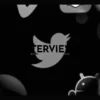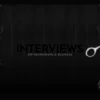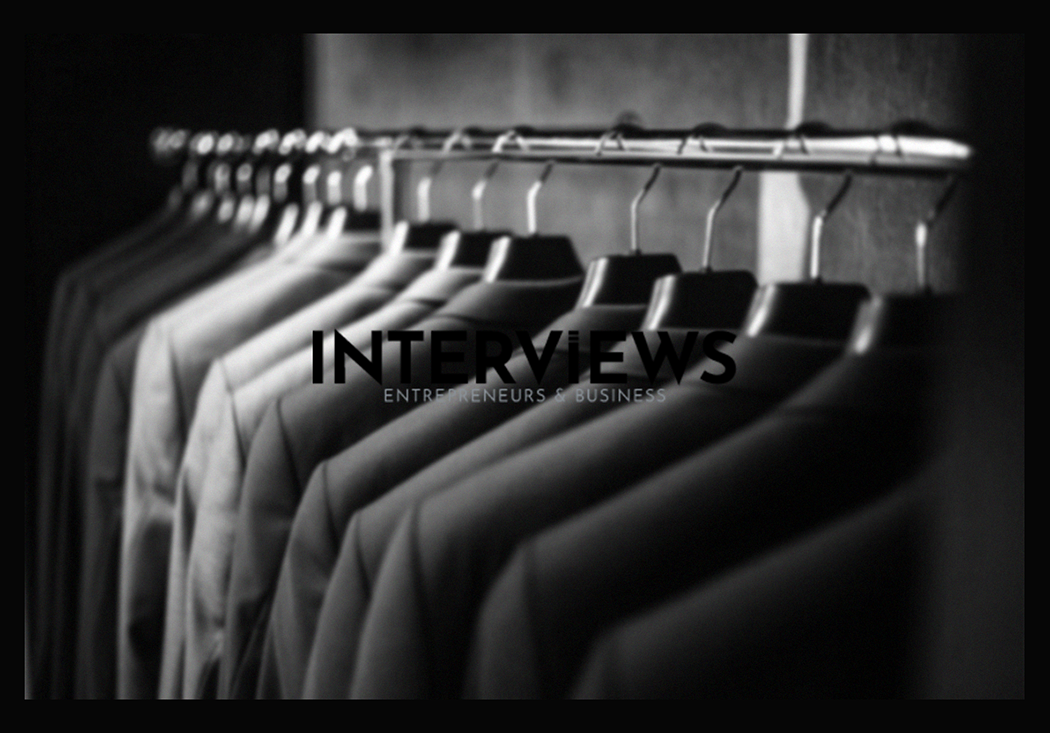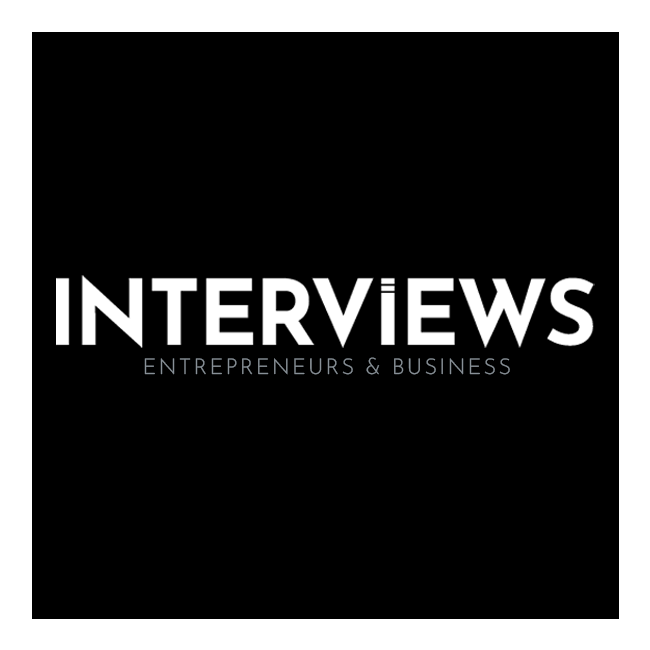Starting a clothing line can feel glamorous. However, it can also be quite challenging. There’s a mix of dreams and spreadsheets. Before you fully commit to designing, let’s discuss finances. It’s crucial to understand the money involved in launching your brand.
Cost to Launch Your Clothing Line: Buckle Up!
How expensive is this journey? Think of starting a clothing line like a choose-your-own-adventure book. Each choice involves costs. If you want an online boutique, it’s cheaper. A flagship store on Fifth Avenue? That’s costly.
Online Clothing Line: Your Bedroom Boutique
Launching online can keep costs low. It’s a safe way to test the waters. Here’s a breakdown of the financial investment needed.
Initial Costs: Getting off the Ground
* Website & E-commerce Platform: $500 – $5,000. This is your online store. A basic setup is affordable. However, fancy features come with a price. Be smart when choosing. * Inventory (Your Initial Stock): $2,000 – $10,000. This reflects the styles and pieces you choose to buy. Start smaller. You can grow your stock later when sales increase. Don’t overspend at first. * Branding and Marketing: $500 – $2,000. A logo will help, but it’s not everything. This covers design costs. It includes social media setup and your brand’s voice. First impressions matter. Stay within budget. * Photography & Product Styling: $500 – $2,000. Clear product images are essential. Bad photos won’t attract buyers. Good styling makes items look more appealing. * Legal and Business Setup: $500 – $1,000. Not exciting, but necessary. LLC formation and permits fall into this category. Resolve these issues upfront to avoid problems later.
Ongoing Costs: Keeping the Lights On (and Fashionable)
* Website Hosting & Maintenance: $50 – $200/month. Think of it as rent for your online space. It keeps your site operational. * E-commerce Platform Fees: $50 – $100/month. Platforms like Shopify charge fees. Don’t forget to include this in your budget. * Marketing & Advertising: Variable. This cost varies, depending on strategy. Social media ads can accumulate quickly. * Inventory Replenishment: Variable. You want high numbers here; it means you’re selling well! Monitor stock levels and reorder effectively. * Shipping & Packaging: Variable. This covers delivering products to customers. Quality packaging can enhance your brand image, but it adds to the cost.
Large Retail Clothing Line: Brick-and-Mortar Dreams
Want a larger operation? A physical store is a bigger commitment. This requires substantial investment. Let’s analyze the costs involved in launching a larger clothing line.
Initial Costs: Setting Up Shop
* Rent & Leasehold Improvements: $20,000 – $100,000+. Your location matters. Prime spots have higher prices. Making the space appealing adds to your costs. * Inventory (Initial Stock): $20,000 – $100,000+. Stocking a physical store requires a considerable investment. Plan for larger inventory volumes than online shops. * Branding & Marketing: $5,000 – $20,000+. Signage, events, and ads are expensive. Spreading the word in person needs budget consideration. * Staff Salaries: $20,000 – $50,000+. Selling clothes often requires a team. Their pay is essential, especially at launch. This normally includes initial costs before revenue starts coming in. * Equipment & Fixtures: $5,000 – $20,000+. Shelving, racks, and registers are necessary for your store setup. It’s not only about clothes; you need a full retail space environment. * Legal & Business Setup: $1,000 – $5,000+. More permits and potentially higher legal complexities arise with larger operations. The impact of regulatory steps increases with size.
Ongoing Costs: Keeping the Store Doors Open
* Rent & Utilities: Variable. This includes rent and utility costs. These vary widely based on location factors. * Inventory Replenishment: Variable. Keeping products on the shelves is critical. Healthy sales drive this revolving expense. * Marketing & Advertising: Variable. Local promotions and events help maintain store traffic. Budget for various strategies to attract customers. * Staff Salaries: Variable. Ongoing payroll costs shift based on staffing needs. This varies with sales performance. * Insurance & Legal Fees: Variable. Insurance and legal expenses fluctuate. These costs can be unpredictable for small businesses. * Shipping & Packaging: Variable. Shipping can be necessary for retail outlets or handling returns, so don’t forget these costs in budgeting.
Other Cost Factors to Mull Over:
* Production Costs: Creating your own garments involves fabric and labor expenses. Ethical sourcing can raise costs but may be worth it for your brand’s image. * Design & Development: Hiring design professionals comes at a price. Freelancers and in-house teams each have financial impacts. * Sourcing: Importing materials includes shipping and duties, making it more complex and expensive. * Profit Margins: Retail margins are generally 40% to 60%. Incorporate margins into your pricing strategy for profit generators. * Business Plan: Sounds tedious, but creating one is vital for success. A detailed plan acts as your roadmap. Don’t overlook this step. * LLC: Forming a Limited Liability Company can protect personal assets. While not mandatory, it’s a prudent choice. We’ll dissect this topic further down the line.
Key Steps to Launch Your Clothing Brand: The Fashion Blueprint
Now that we’ve covered the costs, let’s look into actions you’ll take. Starting a clothing brand means creating an actual business, not just a design idea. Follow these steps to help guide you through this process.
Develop a Killer Business Plan: Your North Star
* Define Your Brand: Clarify your vision and audience. Who do you aim to dress? Is it sustainable fashion for eco-friendly consumers? Be specific in identifying your niche. * Research the Market: Analyze trends and competitors. Understand existing demands and uncover gaps in the market. Market research serves as your powerful tool. * Determine Business Structure: Choose between sole proprietorship, LLC, or corporation. Your legal structure will affect taxes and paper trail obligations. * Outline Financial Projections: Include startup expenses and revenue predictions. Understanding figures is vital for planning success or failure outcomes. * Develop a Marketing Strategy: Decide how you will attract customers. Use social media or influencer collaborations? Design a clear marketing approach to gain attention across all platforms.
Design & Develop Your Clothing Line: From Sketch to Stitch
* Create Your Designs: Utilize sketching and design software to produce creative designs that match your brand vision and target market. * Source Fabrics & Materials: Identifying quality fabric suppliers is crucial for product excellence. Seek sustainable materials or find affordable options that fulfill your design requirements. * Find a Manufacturer: Decide if you will make products yourself or hire a manufacturer. Weigh local versus overseas production impact significantly in costs and quality control decisions.
Build Your Brand & Online Presence: Get Digital (and Look Good Doing It)
* Create a Website: This will be your online storefront. Ensure it looks professional and offers mobile capabilities for user convenience. * Develop Brand Identity: Name, logo, and style should all connect cohesively to create a memorable brand image that resonates with your audience. * Build Social Media Presence: Choose platforms that align with your audience demographics to engage and promote effectively while building community connections.
Market & Sell Your Clothing: From Hype to Sales
* Develop a Marketing Plan: Construct methods for attracting traffic to your online or physical store utilizing SEO, social media avenues, and email outreach campaigns. * Consider Online Sales: Select an e-commerce platform like Shopify to facilitate smooth customer transactions for online buyers. * Explore Retail Partnerships: Form alliances with boutiques or department stores to reach more customers through wholesale or consignment methods. * Focus on Customer Service: Strive to create happy customers who return again and again by offering excellent service that encourages loyalty amongst shoppers.
Legal & Business Considerations: The Less Glamorous Essentials
* Register Your Business: Licenses, permits – make it legal. * Protect Intellectual Property: Trademarks, copyrights – shield your brand name and designs. * Understand Tax Obligations: Sales tax, income tax – avoid issues. Consulting a tax advisor is wise.
Tips for Clothing Line Success: Wisdom Nuggets
* Stay True to Your Brand: Consistency is important. Designs, messaging, everything should align. * Be Adaptable: Fashion changes quickly. Trends shift. Be ready to pivot and adjust your strategy. * Network & Build Relationships: Industry connections are valuable. Other designers, suppliers, retailers – connect, connect, connect. * Focus on Quality: Quality matters more than quantity. Well-made, durable clothes build trust. * Experiment & Innovate: Try new things fearlessly. Push boundaries. Fashion thrives on creativity.
LLC for Your Clothing Brand: Shield or Hassle?
LLC – Limited Liability Company. Sounds official? Is it essential for your fashion brand? Let’s explore.
Why an LLC is Smart: The Benefits
* Liability Protection: If sued or in debt, your personal assets (house, savings) stay safe. Without an LLC, business and personal assets are one entity – risky. * Professionalism & Credibility: LLC looks more legitimate than “Jane Doe Designs.” This boosts credibility with customers and suppliers. * Separate Finances: A business bank account keeps finances distinct. Bookkeeping and tax matters become easier. * Tax Advantages (Sometimes): LLCs can provide flexible tax options. Consult a tax expert to discover potential benefits. * Ease of Operations: Opening business accounts and securing loans is often smoother with an LLC structure.
When LLC Might Be Unnecessary Initially: The Exceptions
* Small, Low-Risk Biz: A tiny, side-hustle clothing line may work as a sole proprietorship. But as growth happens, reconsider that choice. * Early Stages: Start as a sole proprietor and form an LLC later when risks become more apparent. It’s not an all-or-nothing thing from day one.
Steps to Form an LLC: Making It Official
* Choose a Business Name: It must be unique and available in your state. Check state databases for availability. * Register Your Business: File paperwork with the Secretary of State in your state. Each state has its own process. * Obtain an EIN: Get your Employer Identification Number from the IRS. It’s like a social security number for your business. * Create an Operating Agreement: This outlines the rules for your LLC. It’s important, although internal. * Open a Business Bank Account: Keep those finances separated! This step is crucial for an LLC.
Starting a Clothing Line with Zero Experience: Smartly Fake It ‘Til You Make It
No fashion degree? Never sewn a thing? Don’t panic. Passion and determination are key assets. Experience can be overrated. Here’s how to navigate fashion as a newbie.
Research & Planning: Gaining Knowledge and Confidence
* Understand the Fashion Industry: Trends, target markets, competitors – immerse yourself in research. Read blogs, magazines, follow influencers. * Develop a Business Plan: This is essential when learning while doing. Your plan serves as your guide. * Define Your Niche: Don’t be everything to everyone. Focus is critical. Streetwear? Sustainable fashion? Own a niche. * Determine Brand Identity: What differentiates you? Style, message, values – identify your brand’s essence. * Set Realistic Goals: Growth takes time; start small and pursue manageable milestones.
Design & Production: From Ideas to Garments
* Source Inspiration: Inspiration lurks everywhere! Other brands, fashion magazines, social media – don’t copy but glean ideas. * Create Designs: Hire freelance designers or use design software (Canva, Adobe Illustrator). You don’t have to sketch impeccably. * Find Reliable Suppliers: Research fabric suppliers carefully. Quality materials matter greatly. Build valuable relationships. * Consider Production Methods: DIY or manufacturer options? Weigh each choice’s pros and cons for beginners. Print-on-demand offers low risk to start.
Marketing & Sales: Visibility Matters
* Build Online Presence: Websites and social media showcase your brand. Professionalism is vital even as a one-person operation. * Develop a Marketing Strategy: Use social media, influencer collaborations, emails – determine how to reach your audience. * Build an Audience (Before Launch): Engage on social media before launching your brand to create anticipation. * Consider Dropshipping: This allows minimal upfront inventory investment and lowers risk for beginners. * Set Pricing: Research competitor prices to find your ideal price range and ensure profitability. * Register Your Business: Legalize operations! Protect your brand name and structure legally.
Extra Tips for the No-Experience Entrepreneur: Level Up
* Network with Entrepreneurs: Connect with other fashion designers, business owners for insight. Collaboration fosters community over competition. * Be Patient & Persistent: Growth takes time; avoid expecting rapid success. Persistence is essential. * Stay Updated on Trends: Fashion evolves rapidly. Keep learning and adapting to stay relevant. * Seek Feedback: Request insights from customers, friends, mentors about your designs. Honest feedback is invaluable.
Building Your Own Brand: More Than Just a Logo
Branding counts. It represents the essence of your clothing line. It encompasses the entire customer experience. Let’s forge a brand that resonates deeply.
Define Your Brand Identity: Your Core Essence
* What’s Your Brand About? What problem do you solve? Identify your unique value beyond clothes – clarify your purpose. * Brand Story: What led you to create this brand? Values and mission should be relatable and genuine; people connect with narratives. * Brand Voice & Tone: Playful, serious, informative? Identify a consistent voice in all communications. Your brand’s personality in words should be clear. * Brand Personality: If your brand were a person, how would they act? Sophisticated? Rebellious? Fun-loving?
Identify Your Target Audience: Know Customers
* Who Are You Trying to Reach? Understand needs, desires, behaviors of your ideal customers – age, location, interests, style is vital for targeting. * Research Your Target Market: Use surveys, focus groups, and interviews for valuable insights about potential buyers. Don’t merely guess; know your audience intimately.
Develop a Unique Value Proposition: Why You?
* What Makes You Different? Identify your unique selling points (USPs). Quality? Sustainability? Unique designs? Clarify what differentiates you. * Create a Positioning Statement: A brief summary highlighting your brand’s value and target audience is essential for effective communication.
Build a Consistent Brand Presence: Always Present
* Choose a Memorable Name: The name needs availability as a domain and on social media platforms for consistency and recognition. * Design Logo & Brand Assets: Visual identity through logo, color palette, and fonts must be professional and appealing visually. * Create a Brand Style Guide: Documenting your visual identity ensures consistency throughout all channels. * Apply Branding Consistently: Make this present on your website, social media, packaging, etc.; consistency builds trust and recognition for your brand. * Create a Slogan: Your catchy phrase should capture brand essence and remain memorable. * Tell Your Brand Story: Share your journey, experiences, and values through a compelling narrative that connects emotionally with your audience. * Use Word Association: Brainstorm ideas related to your brand name and slogan creatively to spark innovation. Strategic word association helps refine identity.
Promote Your Brand: Visibility Matters
* Use Various Marketing Channels: Utilize website, social media, email, PR, collaborations – adopt a multi-channel approach to reach wider audience effectively. * Create Engaging Content: Share valuable information; blog posts and style guides that resonate with your audience create interest and engagement. * Build Relationships: Foster community by engaging authentically with your audience – strive for two-way communication instead of mere broadcasting of content. * Track Your Results: Monitor marketing efforts closely; analyze data to optimize strategies for better ROI in future campaigns.
Setting Up Your Clothing Brand: Practical Steps
Dive into the practical aspects of setting up your clothing brand, from planning to daily operations.
Develop a Business Plan: Your Blueprint
* Define Your Brand: Identify target audience, style, and brand values to anchor your brand’s core concept firmly. * Create a Business Plan: Goals, strategies, financial projections are essential for achieving success on paper before launching. * Research the Market: Monitor trends, competitive landscape, and customer behaviors to remain informed and adaptable in the industry environment. * Choose Business Structure: Decide between sole proprietorship, LLC, etc., as this defines your legal foundation for operating legally. * Register Your Business: Secure necessary licenses or permits for ensuring operations comply with local regulations.
Design & Develop Your Clothing Line: Concept to Creation
* Hone Fashion Design Skills: Pursue formal education or self-teach; refining design skills proves beneficial in creating quality pieces for customers. * Source Fabrics & Materials: Identify reliable sources for high-quality fabrics crucial in ensuring finished products appeal to consumers and stand out in their segment. * Establish Production & Manufacturing: Determine whether to produce in-house or outsource manufacturing; choose based on costs and efficiencies that align with brand vision and logistical capabilities. decisions. Develop a Pricing Strategy: Assess costs, analyze competition. Choose competitive pricing.
Build Your Brand & Online Presence: Digital Footprint
Create Website & Online Store: Create an e-commerce site. Customization is key. Provide a smooth shopping experience. Develop a Marketing Plan: Use social media, email marketing. Engage your audience effectively. Build Brand Identity: Designs include logo, colors. Consistency aids recognition. Focus on Quality Control: Maintain product standards. Quality fosters trust.
Market & Sell Your Clothing: Reaching Customers
Pitch to Retailers: Consider wholesale or consignment. This increases distribution. Build Customer Base: Attract and engage your audience. Focus on retention. Provide Excellent Customer Service: Be prompt, address issues. Satisfaction remains crucial. Analyze Sales & Marketing Data: Track and adjust strategies. Optimize using data insights.
Ongoing Operations & Growth: Sustainability and Scale
Manage Inventory & Production: Ensure adequate stock. Scale production for growth. Stay Up-to-Date on Fashion Trends: Innovate and stay relevant. Fashion changes rapidly. Seek Customer Feedback: Use feedback to improve. A customer-centric focus is vital. Consider Expanding Your Brand: Introduce new products or markets. Plan for long-term growth.
Starting a T-Shirt Business: Simpler, but Still Serious Business
T-shirts are wardrobe essentials. Launching a t-shirt business can be an entry into fashion. Don’t overlook the power of a simple tee.
Research & Plan: T-Shirt Specifics
Market Research: Investigate trends and popular designs. Know your target t-shirt audience. Niche Selection: Focus on sports, music, or hobbies. Specialization helps differentiation. Business Plan: Outline goals and target markets. Sales and marketing plans are crucial. Business Structure: Choose from sole prop to LLC. Structure affects operations.
Design & Sourcing: T-Shirt Blueprint
Design Your T-shirts: Create unique, appealing designs. Aim for creativity. Source Materials: Decide on print on demand or bulk shirts. Explore various options for sourcing. Printing Partners: Choose reputable print-on-demand services. Ensure reliability in printing.
Set Up Your Online Store: T-Shirt Shopfront
Choose E-commerce Platform: Select Shopify or BigCommerce. Find the right platform for sales. Set Up Your Store: Design the site and create listings. Implement user-friendly payment options.
Marketing & Sales: T-Shirt Promotion
Promote Your Brand: Use social media and email channels. Target your marketing effectively. Build Brand Story: Define values and unique appeal. Your narrative matters in marketing. Focus on Quality: Ensure high-quality t-shirts are provided. Prioritize quality in designs and service.Set Prices: Establish competitive prices for profitability. Price strategically to attract customers. Offer Customer Support: Provide prompt, helpful service. Aim for excellent customer care.
Tips for T-Shirt Triumph: T-Shirt Takeaways
Focus on Quality: Utilize premium fabrics and printing methods. Quality enhances appeal and trust. Stay Updated: Monitor trends and customer preferences. Adapt to the market needs continuously.Build a Community: Foster engagement and loyalty among customers. Nurture your t-shirt community actively.Be Creative: Experiment with innovative designs regularly. Keep creativity at the forefront.Consider Print on Demand: This minimizes investment and storage risks. Low-risk routes can benefit startups.Validate Designs: Gather feedback prior to launching any new design. Test designs with potential customers.Don’t Copy: Strive for originality in your designs. Unique t-shirt styles foster brand loyalty.Business Plan: Stay organized and focused on goals. A solid plan is vital for success.
Creating a Killer Clothing Brand Name: First Impressions Count
Your brand name serves various roles. It’s a handshake, a billboard, your first impression. Make this moment count. Naming your brand requires artistry and strategy.
Understand Your Brand & Target Audience: Name Alignment
Brand Values: Define if your brand is edgy, sustainable, etc. Align your name accordingly.Target Audience: Know if you target young professionals or eco-conscious customers. Choose a resonant name.Brand Identity: Identify the tone and personality of your brand. Let the name embody that essence.
Brainstorm and Refine: Name Generation Tactics
Keywords: Identify words symbolizing your brand message. Utilize keywords for creative thinking.Online Tools: Use name generators for ideas. Generate possibilities quickly.Combine Words: Mix keywords or foreign terms creatively. Explore unique combinations.Wordplay: Consider using puns or alliteration techniques. Engage through witty naming methods.Acronyms: Create shorter, memorable names that resonate easily with customers.Mythology/Literature: Reference these sources for inspiration in naming efforts. Seek rich storytelling elements in names.Sound Imitation: Think about words that imitate sounds for catchy names.
Check Availability and Legality: Name Due Diligence
Trademark Search: Verify that the name isn’t trademarked already. Ensure legal validation of your brand.Domain Name: Research if domain names are available for your brand identity. Secure a domain swiftly.Social Media Handles: Ensure available names across platforms for branding presence online.
Test and Refine: Name Validation
Pronounceability: Choose names that are easy to say aloud.Harness phonetic clarity with your choices.Memorability: Identify if the name sticks in customers’ minds easily.City.Relevance: Assess if the name reflects your brand’s essence effectively. Let it echo your identity.Feedback: Seek opinions from your target audience actively regarding potential names.
Branding and Visual Identity: Name and Visuals in Harmony
Logo:Create a logo that complements the brand name visually and gives off appropriate vibes.Your Website:A well-designed site showcases products effectively aligning with brand names.Your Social Media Presence:Create a consistent branding approach across online platforms using visuals.
Sourcing Fabric for Your Clothing Line: The Material World
The fabric serves as the foundation of clothing lines.Sourcing is critical due to its influence on quality and cost.Stay mindful of sustainability during this phase.
Understand Your Needs & Fabric Construction: Fabric Fundamentals
Aesthetic Considerations:Select materials aligned with designs, target markets, and usage needs effectively.Sourcing Techniques:Learns about different types of fabric weaves and finishes to enhance learning experience.Sourcing Strategies:Add depth by exploring supplier types direct mills or agents to find resources.Sustainability Standards:Select fabrics that meet performance quality while prioritizing ethical practices.
Sourcing Strategies: Determine fabric procurement paths that suit your needs.
Your sourcing strategy affects costs significantly.
You can build a solid foundation for your clothing line design choices.
Create processes that foster long-term supplier relationships.
Your clothing journey may be challenging.
This guide provides helpful insight as you navigate sourcing decisions.




